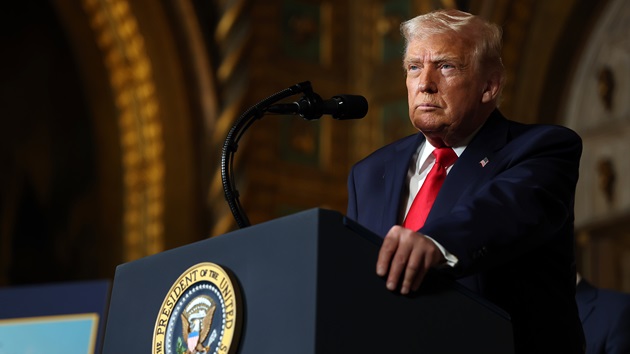Education Department to roll out another pathway to student loan debt relief in February
Written by ABC Audio ALL RIGHTS RESERVED on January 12, 2024

(WASHINGTON) — The Biden Administration is rolling out another pathway to debt relief for certain student loan borrowers next month.
The program targets people who took out smaller loan balances initially and have been paying their loans down for over a decade, unable to get out from under the debt. It’s a component of the SAVE Plan, a new income-driven repayment plan rolled out by the Biden administration last year.
Specifically, people will qualify if they took out less than $12,000 as their initial student loan balance and have been paying it down for 10 years. They also have to be enrolled in SAVE.
The shortened pathway to debt relief is largely intended to benefit people who went to community college or didn’t end up graduating from college but still incurred debt, officials said, which has historically been the group at highest risk for defaulting on their loans.
“If you’re paying it for 10 years, it’s enough,” Education Secretary Miguel Cardona said in an interview on “Start Here,” ABC News’ daily podcast. “They’ve done their part and it’s time to release that debt so they can move on and continue to grow in their finances,” he said of borrowers.
“This is one strategy among many that is intended to open the doors to higher education, make it more affordable so that more folks can access it,” Cardona said to “Start Here” host Brad Mielke.
More than three in five borrowers with defaulted loans originally borrowed less than $12,000, Department of Education Under Secretary James Kvaal said.
Administration officials wouldn’t provide specifics on how many people will qualify for this new pathway to debt relief – but about 6.9 million people have enrolled in SAVE since it opened up last year, or about one-third of borrowers currently in repayment on their student loans, Kvaal said.
Going forward, the Department of Education estimates that the SAVE Plan will make 85% of future community college borrowers debt-free within 10 years.
But as with the broad headaches of the student loan payment restart this fall, the rollout of the SAVE Plan has not been without its hiccups. People attempting to enroll in SAVE during its early fall months faced long processing times for their applications, with around 450,000 applications pending for longer than 30 days, according to a January report from the Consumer Finance Protection Bureau.
The long processing times left some borrowers unable to enroll in a more affordable plan in time for the end of the three-year pause on student loan payments, which lifted this past fall — though borrowers have a yearlong grace period before they’ll be significantly penalized for missed payments.
On Thursday, senior administration officials said the majority of pending applications, which CFPB estimated were around 1.25 million total in October, had been processed, and that much of the backlog was alleviated — though officials wouldn’t quantify specifically how many were still pending.
The administration announced the SAVE Plan, including the shortened path to debt relief, last year, but said that particular component wouldn’t be ready until July. On Friday, the Biden administration celebrated the February rollout as an early victory.
“I am proud that my Administration is implementing one of the most impactful provisions of the SAVE plan nearly six months ahead of schedule,” President Joe Biden said in a statement. “This action will particularly help community college borrowers, low-income borrowers, and those struggling to repay their loans.”
The department will start automatically discharging debts next month for people who qualify and are already enrolled in SAVE, without any effort needed from borrowers. The administration will also begin a campaign to get more people enrolled in SAVE, particularly people who took out low initial balances.
Debt relief is available to people who took out more than $12,000, too. For every $1,000 more that borrowers take out, one year is added to their repayment plan — so people who took out $14,000 could see their debt wiped clear after paying for 12 years.
The administration continues to market the SAVE Plan as the most affordable option for the majority of borrowers, and particularly people with high balances but low incomes.
The key benefits are that the plan offers a shorter path to debt relief than other income-driven repayment options, which require people to pay a portion of their income toward their loans for 20-25 years before their debt is relieved. The SAVE Plan also subsidizes payments to prevent runaway interest.
Meanwhile, for people who make less than minimum wage, their bills are set at $0. According to the Department of Education, 3.9 million of the nearly 7 million enrolled in SAVE so far – more than half of all enrollees – have payments of $0.
“SAVE is the first real student loan safety net in this country. It’s long overdue,” Cardona said.
And 75% of SAVE enrollees so far are Pell Grant recipients, which are grants given to low-income college students, the department said.
In July, another component of the plan will kick in, slashing the percentage of peoples’ income that they need to put toward their loan payments each month, from 10% down to 5% — a move that will further lower monthly bills.
Copyright © 2024, ABC Audio. All rights reserved.
 KVSP
KVSP 



